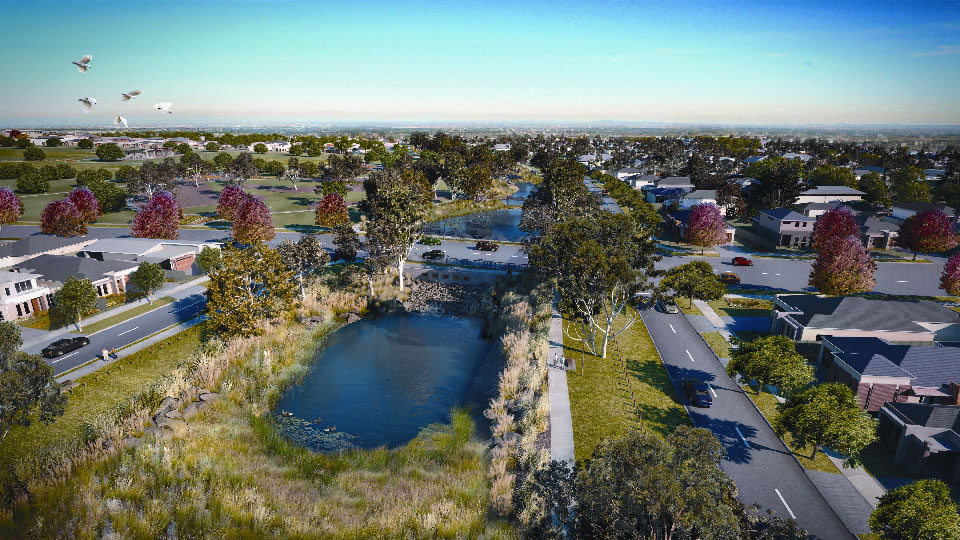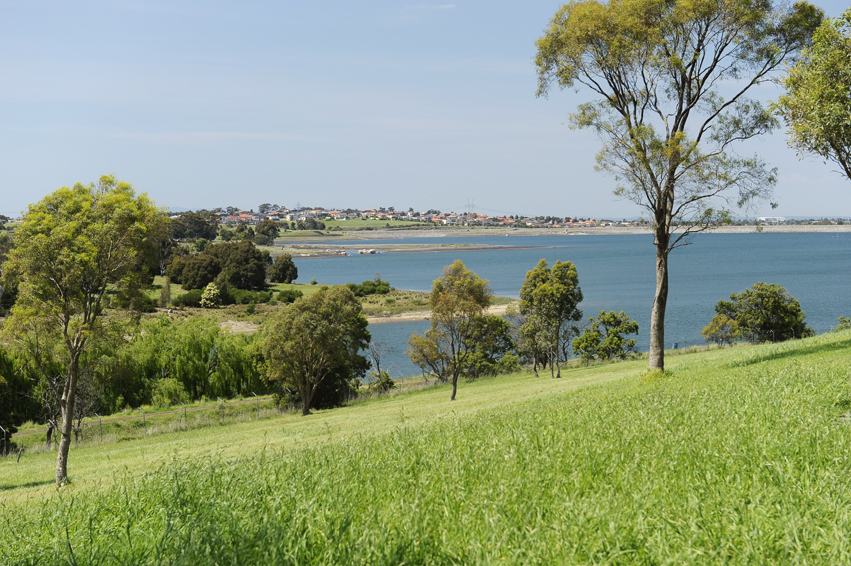Ensuring Client Profitability In The Face Of Environmental Challenges
Aston is a 130 hectare, 1730 lot residential development located on Craigieburn Road in the northern suburbs of Melbourne.
 PEET Aston - Wetlands Artist Impression - courtesy PEET
PEET Aston - Wetlands Artist Impression - courtesy PEET
With thirty-two stages in total this project is expansive in scope, including provision for public spaces, sporting fields and a secondary school, and there have been many significant challenges for the developer PEET Ltd and lead civil infrastructure engineer Meinhardt:
- Maximising development potential within planning and drainage catchment restraints
- Avoiding unnecessary capital infrastructure spending
- Meeting financial performance targets
- Managing an extremely sensitive environmental area
- Meeting documentation time frames and gaining approvals in a timely fashion
The EPA was particularly concerned about this area, known as Flaxlily Creek, as it includes an aboriginal cultural heritage area, the protected habitat of the endangered golden sun moth and a dry rock wall constructed by early settlers.
One of the significant successes was the design and construction of a 100 Year Wetland Catchment with provisions for protection of this sensitive local fauna. Key to the design was for the wetland to meander around the significant environmental elements to minimize disturbance. This required the developed flow from the catchment to be throttled back to the pre-developed flow. The flow leaving site needed to be clean enough to drink so that the Golden Sun Moth zone and the natural tributary was not inundated with silty polluted water. During construction of the wetland, where there is no vegetation present within the wetland, the challenge was how to prevent silty water leaving site. If a solution was not implemented, everyone within the project team was at risk of legal action from the EPA. Collaborating with a specialist in the field for treating water and in conjunction with Statewide Rivers, a management plan was produced that ensured no flow left the site until it appeared as clean as tap water. The water was treated by creating a chemical treatment pond within the wetland footpath that had capacity to treat sufficient flows to Melbourne Water and EPA guidelines. This rigorous water treatment process has been maintained throughout the construction of the wetlands and subsequent stages.
“This shows that any environmental challenge imposed upon the developer can be overcome, incorporated into the development plan, constructed around and yet still maintain the necessary sales rate and be profitable,” said Matthew Holmes, Project Leader for the Urban Development team.
Beyond the wetland solution, Meinhardt negotiated stringent environmental management practices during construction, which were non-confrontational and met the obligations of all stakeholders, to achieve quick settlement times for the client.
Meanwhile, sequencing stages of the development by utilising the existing servicing and avoiding capital infrastructure spending; this included delivery of $21 + million of stage works and $9 + million of major works in a 24 month period.
Image courtesy PEET
Meinhardt Team:
 Steven Dunstone |
 Alex Carey |
 Matthew Holmes |

